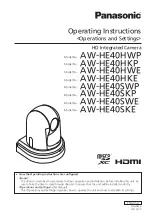
13
AQ-OP-00010_E
Use only power supplies designed to charge storage batteries.
Most DC power supplies are not designed to charge batteries and lack sufficient reverse current
protection.
If the Modules are to be installed in a series configuration, it is important to match their states of
charge to be within 5% of each other.
Ideally, before Modules are connected in series they should be taken to full discharge 40 ±1 V at open
circuit. Aquion recommends that the parallel bussing operation be performed using circuit breakers in
a UL-approved battery combiner.
The high impedance of the AHI battery limits the short-circuit current of the battery.
Care must still be taken, however, when “live parallel bussing” batteries with unequal open circuit
voltages. The current created in this situation may still be sufficient to cause an arc or cause a fuse to
blow.
During its initial charge cycles, it is normal for the battery to accept more energy before it reaches
its max voltage.
This is the normal conditioning process that occurs in the battery. A specific conditioning procedure
does not need to be used.
6.3 Discharge/Charge Cycles
The AHI battery chemistry allows for long cycle life at high depth of discharge.
Based on the current results of Aquion’s ongoing, real-time test of production batteries, Aquion is
targeting a cycle life of 3,000 cycles at 100% depth of discharge to 80% retained capacity on all
commercial battery products.
The AHI battery chemistry can accept any charge or discharge profile or algorithm that respects the
operating limits defined in the Product Specification Sheet, available on the Aquion Energy Customer
Portal at
http://info.aquionenergy.com/customer-portal
. For example, the battery can accept
charging up to the recommended current limit as long as the upper voltage limit is not exceeded.















































